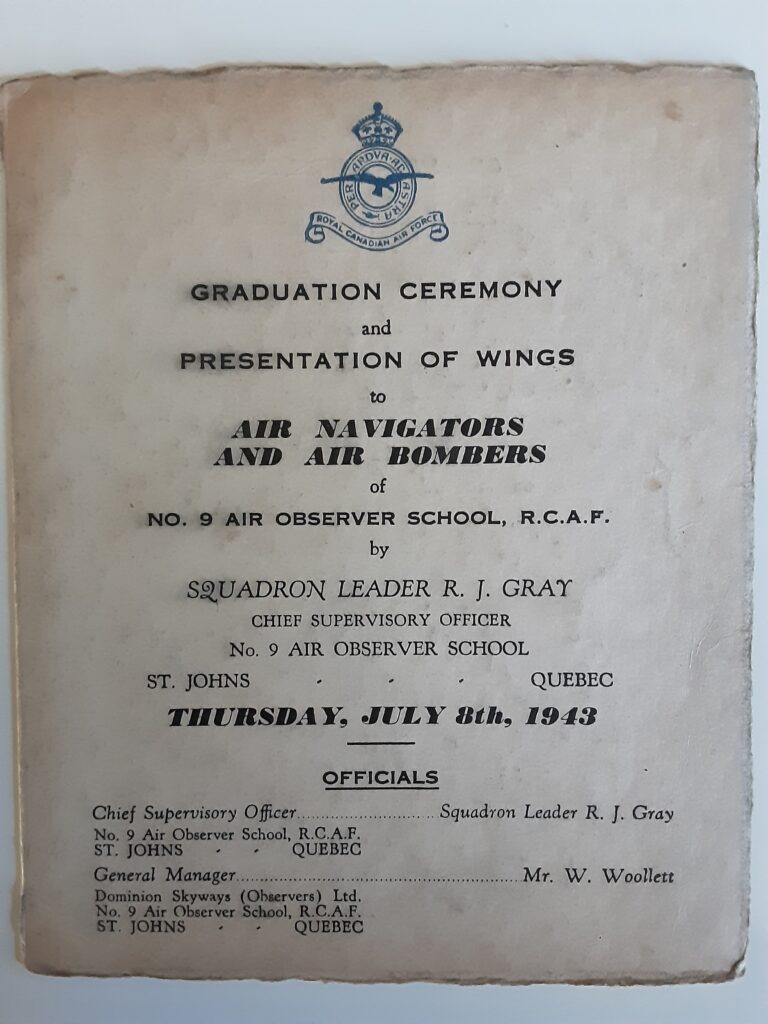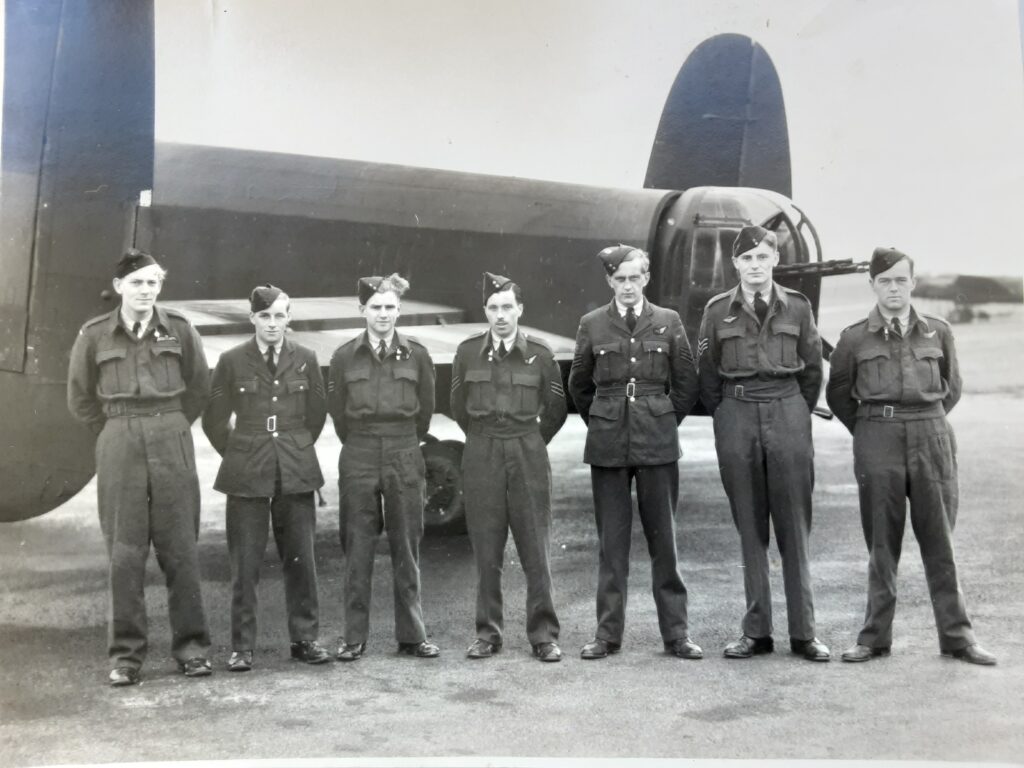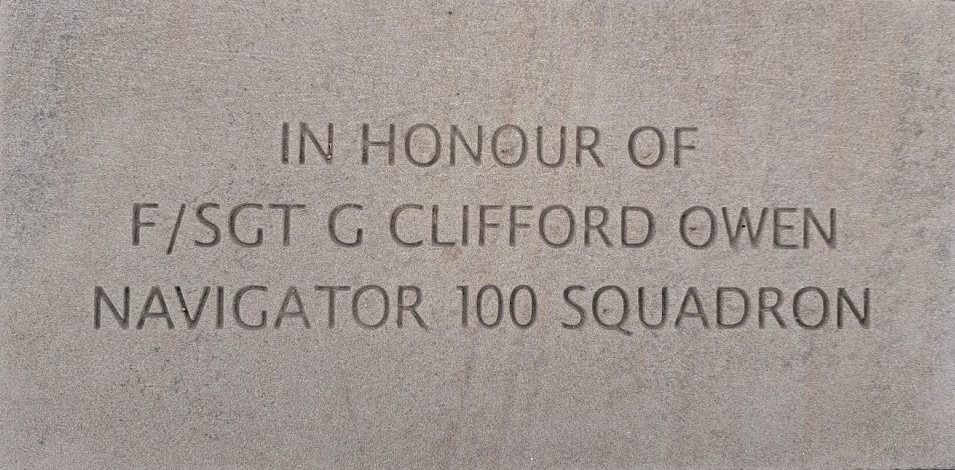
Flt/Sgt G Clifford Owen, Navigator, 100 Squadron at RAF Grimsby, Waltham.
The path to joining up
Cliff Owen, a native Welsh speaker, was born on 17 October 1923 in the South Wales mining village of Glanaman, in the Amman Valley. He was the youngest of 4 children to Thomas John and Margaret Owen.
Securing a Scholarship in 1936 kept Cliff in school and out of the mines. On completion of the Scholarship, shortly after the outbreak of the War, a job in Swansea beckoned.
Cliff soon saw one brother serving in the Navy and the other brother in the army with the BEF. In 1940 Cliff persuaded the manager of the Magnesium Metal Company where he worked to agree to remove the ‘reserved occupation’ status of his work, enabling him to enlist for the RAF. He passed the aircrew entrance exam and, like so many of his peers, reported to the Aircrew Receiving Centre at Lord’s Cricket Ground, spending the first night in the Long Room. From here he went for initial training in Cambridge.
Training
At Cambridge University Cliff spent 6 months accommodated in the top of a garret in Trinity House College, whilst he successfully undertook a crash course in Navigation and Aeronautics. He was delighted to receive the highest marks of his Flight.
After training to fly solo in a Tiger Moth, it was on to Heaton Park, a form of holding centre before boarding the American ship, Thomas H Barry, for transfer to New York. Next a train across Canada to Bowden, Alberta, where training began in earnest. Cliff used to remark one of his abiding memories of Canada was the warmth of the welcome of every Canadian he met.
In Bowden, Cliff again soloed in a Tiger Moth and later in a Stearman. However, realising he was a much better Navigator than he was a pilot he transferred on to the navigators’ course at No 9 Air Observer School, St John’s Quebec. Along with 17 others he was presented with his “Wings” on July 8th 1943.
He returned to the UK, sailing on the Aquitania into the Clyde and back onto rations. Proudly wearing the blue of the officers’ jacket, Cliff was transferred from Clydeside to Harrogate and then to Millom in Cumberland. Here the aircrew were introduced to the Avro Anson and to experience flying in blackout conditions and, for the Navigator, skilling up on getting the plane back on track using bearings, pinpoints and dead reckoning.
Then came the move to Child’s Ercall to gain high-level bombing practice in an operational class aircraft, the Wellington Bomber, together with experiencing a flight over enemy territory in France (called a nickel) and the opportunity for the Navigator to use the Gee box.
Leaving Child’s Ercall, Cliff moved in early April 1944 to No1667 Conversion Unit in Sandtoft, Lincs, for practice in the Halifax Bomber. As a result of a hand problem Cliff had to cry-off one practice on one day – it was to practice take offs and landings so not essential for the Navigator to be aboard. Sadly, the plane crashed at Moors End colliery, with one fatality and extremely serious injuries to all the other crew.
At the beginning of June 1944, Cliff joined another crew in need of a Navigator. They were posted to No 1 Lancaster Finishing School, Hemswell, Lincs for practice, practice, practice.
Training over, early in July 1944 the crew arrived at 100 Squadron, Waltham, Grimsby – RAF Grimsby. The crew were just inspecting the outside of their Nissen hut accommodation when the noise from engines of soon-to-depart Lancasters was interrupted by a large explosion and a molten piece of metal the size of a man’s hand crashed into the side of their hut. A bomb had fallen out of its cradle and exploded. It was a most forbidding welcome to RAF Grimsby!
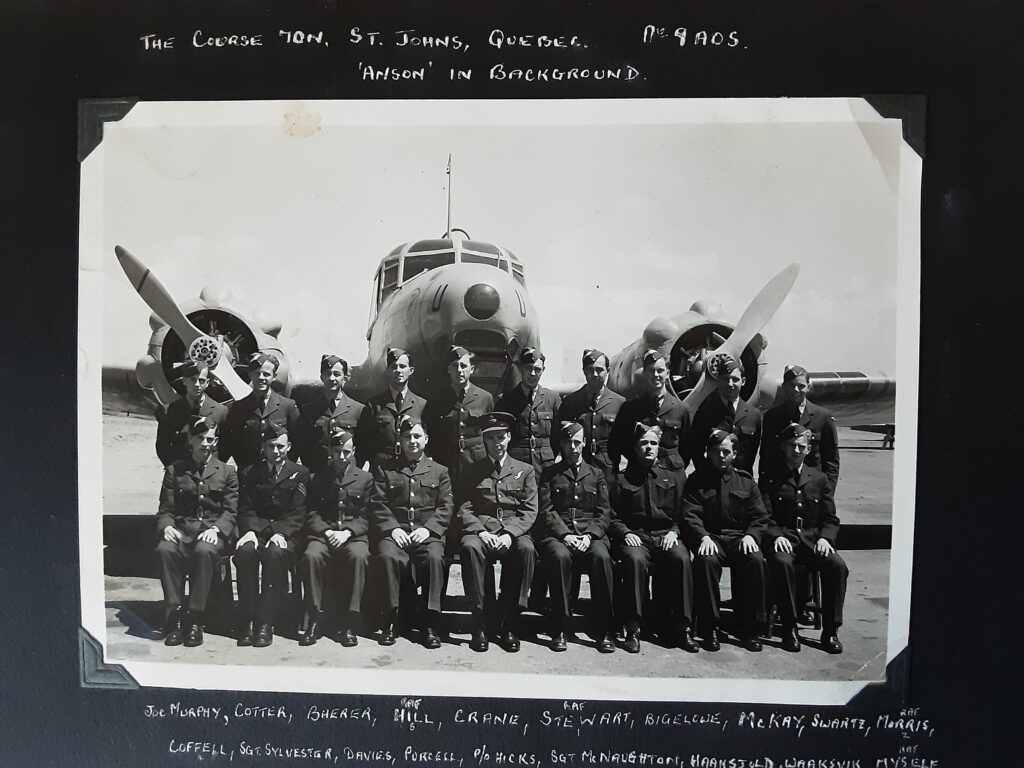
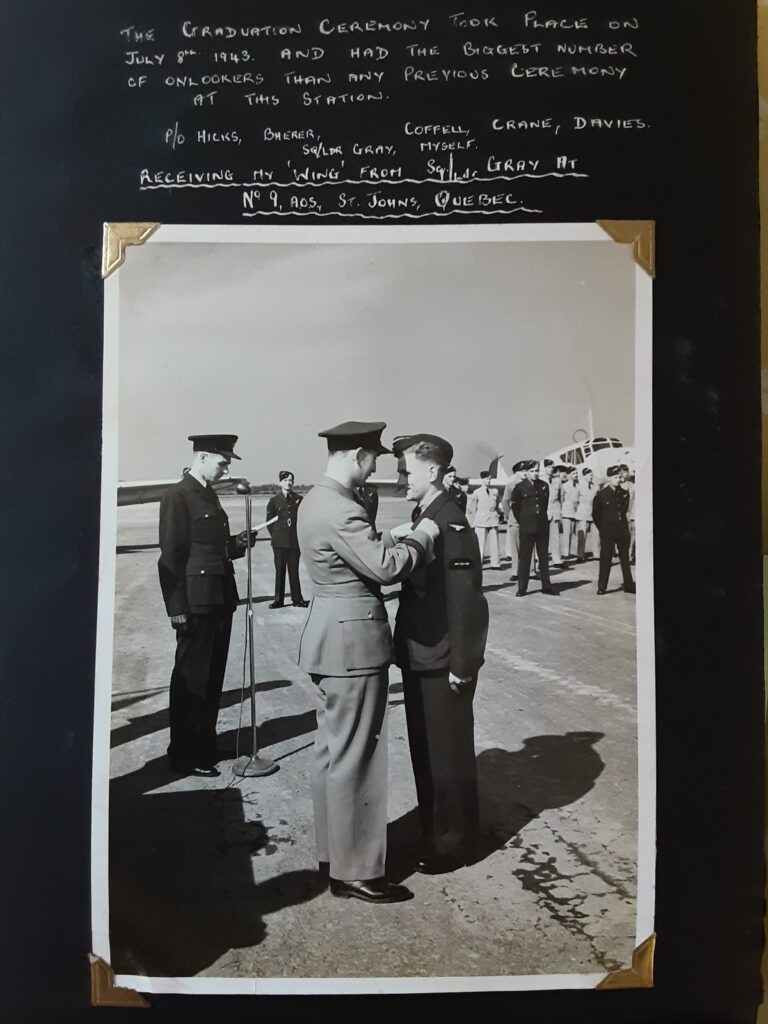
Operations
Following some 2 weeks of crew assessments, acclimatising to longer trips and fighter affiliation experience, on the night of 23/24 July 1944 the crew was briefed on its first operation, departing at 23.05 hours to bomb the Naval Yards at Kiel. Briefing was followed by specialist briefings for the navigators, including route plotting on a Mercator projection, working out wind directions and speeds, the course to fly and route distances. There would then just be time to make for the van to deposit crews at dispersal points.
It wasn’t unusual to find one or more of the navigation aids wasn’t operating properly. However, the H2S airborne, ground scanning radar system was both exceptional and was operating most times. What was not known at the time was that, allegedly, the pulses from the H2S could be picked up by enemy fighter and followed. H2S could be potentially treacherous in giving away the Bomber stream position, significantly increasing risk to crews*.
The Navigator’s main roles lay in determining which courses to fly, checking and maintaining the correct flight path, ensuring the plane arrived over the target at the crucial time and, of course plotting the return to base. Good communication between the Navigator and pilot was crucial. A plane veering off track was an invitation to enemy fighters. It seems the enemy would often light up with parachute flares where they thought the bombers track lay and position fighters nearby ready for the kill. On one occasion Cliffs plane was saved from this aerial trap by their mid-upper gunner hitting a FW 190 night fighter broadside on.
Another significant risk was of mid-air collisions, especially flying at night-time. On an operation to Hopsten Airfield, evasive action needed a steep turn and a near miss with a plane from the Squadron. Unfortunately, mid-air collisions did happen.
After 3 operations the crew agreed they worked well together; so important under the circumstances. The pilot ensured that each of the crew knew their jobs and provided him with information essential to the running of the plane. Whenever it was requested, there was to be no dithering. Crew members’ performances had not been affected by searchlights, bursting shells or machine gun fire.
Operations continued for just over 3 months, with their frequency ranging from daily to every few days. Targets included flying bomb sites, gun sites and batteries, oil refineries, marshalling yards, troop concentrations, Naval repair installations, Stuttgart, Russelheim, Frankfurt, Dusseldorf, Emmeline, Cologne and Duisburgh. After completing their “final” operation, the crew was asked to do one further, to Cologne.
The operations crew of Lancaster HW B LM 644 between 11.7.44 and 31.10 1944 was as follows (l to r in photo):
F/O Healy Captain Australian
SGT E Kitchin Flight Engineer Yorkshire
SGT G C Owen Navigator Welsh
SGT A S G Wilson Bomb Aimer London
SGT R Morgan Wireless Operator Welsh
SGT C G Webb Mid Upper Gunner USA
SGT J R Buchanan Rear Gunner Australian
This crew completed 31 ops at RAF Grimsby, Waltham, with 100 Squadron.
Post war statistics show that the survival rate for aircrew for the period 1943/44 was less than 40% I.e. under 4 out of 10 survived.
Post – Ops
Following completion of ops, like many other crew members, Cliff moved into Transport Command. He wrote: “It became evident that the Allies would have ‘to take on’ Japan and that war could take a long time. Many felt it unwise to lose experienced aircrew when only half the job had been done. Transport Command would be an ideal situation for Pilots, Navigators and Wireless Operators. Their skills could be honed and there would remain a reservoir of aircrew easily available for transfer to RAF Bomber Command should that need arise.”
The need did not arise and Cliff spent nearly 2 years in Transport Command, supplying services, moving military personnel and VIPs. He was promoted to Warrant Officer, which was his rank on Discharge.
He visited many far-flung places he may not have opportunity to visit in future. Each trip became a marvellous geographical experience he always treasured.
Cliff served in the RAF from 16.2.42 – 8.10.46.
Post war
He went on to work for the Ordnance Survey, updating OS Maps. He met and married Margaret and moved into Local Government, becoming Chief Planning Officer with a North Wales Authority. He had 2 children, Anne and Gerald.
In writing about Cliff, I have deliberately sought to identify the places he went and training he undertook with RAF Bomber Command. Some of the place names and activities may correspond with and enhance other reader’s knowledge of their own relatives training, some may be new. Many airfields can still be seen on Google Maps. I have deliberately avoided detailing individual operations and/or their consequences. This, I think is what Cliff would wish for. It would best reflect his modesty about having voluntarily served so selflessly in the RAF, willing to make the ultimate sacrifice. Like so many, he never spoke of ops and didn’t dwell on the past. He preferred always to look forward with a positive attitude and outlook on life. We don’t need to read the detail. We all know that he, his fellow crew men and all the service men and women were real heroes of their time. We should always be so grateful to each and every one.
Gerald Owen
*RV Jones British Scientific Intelligence 1939/45, p631

